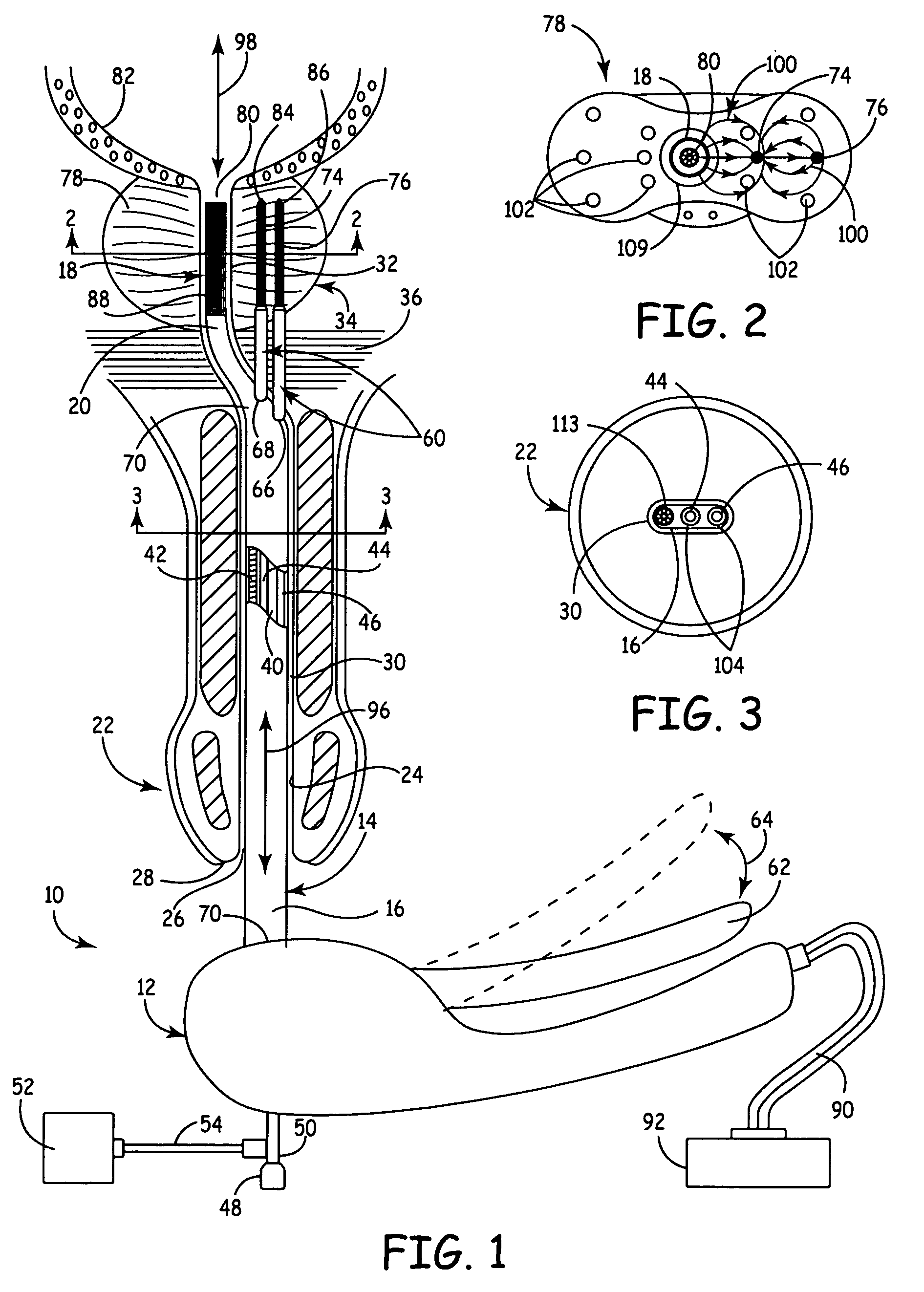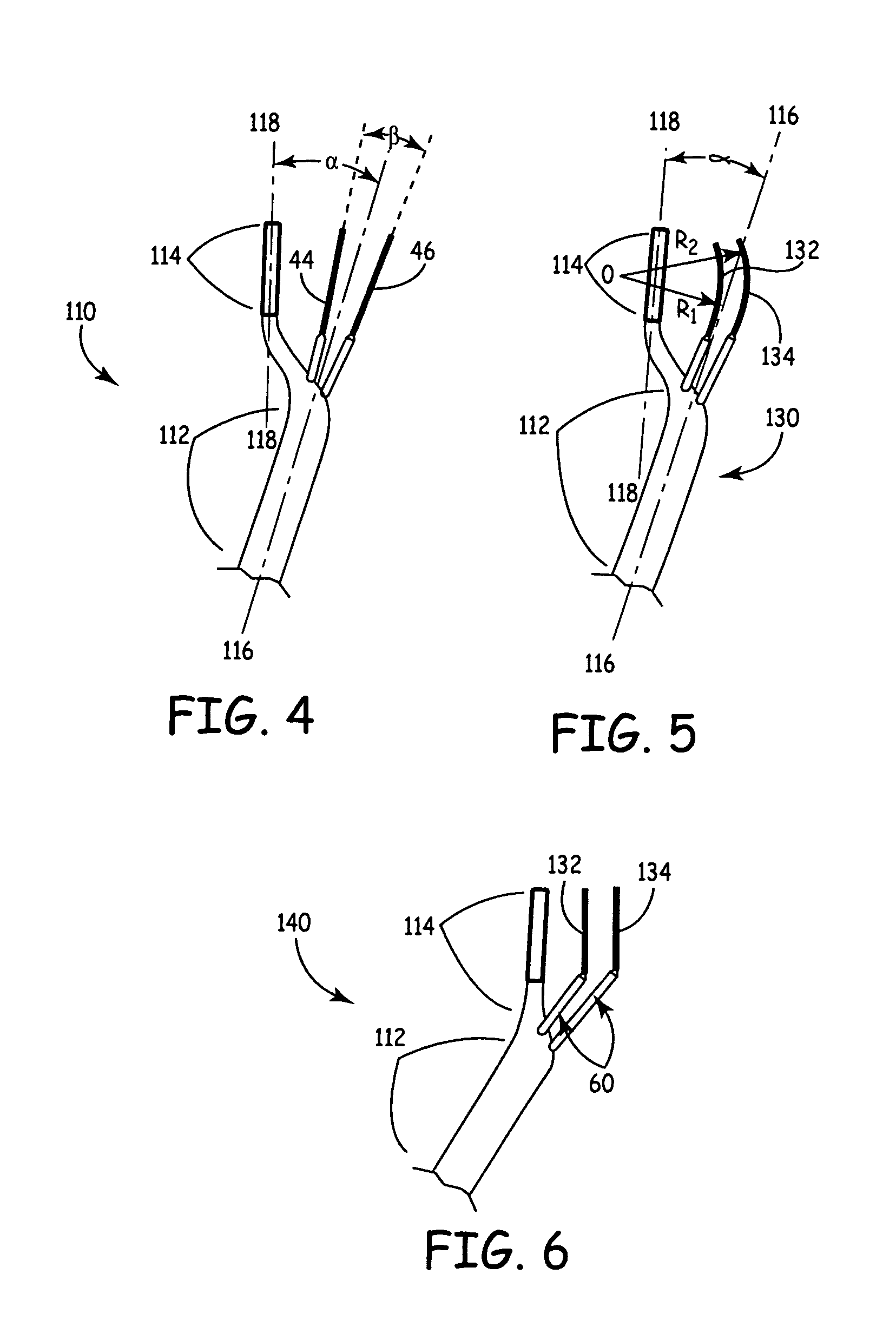Apparatus and method for the treatment of benign prostatic hyperplasia
a benign prostatic hyperplasia and apparatus technology, applied in the field of tissues electroporation, can solve the problems of irreversibly chemically imbalanced cells that cannot repair themselves by any spontaneous or biological process, die, and cells are more vulnerable to cell death by electroporation, so as to facilitate the preparation and proper positioning of needle electrodes, reduce treatment time, and facilitate the effect of reducing the number of treatment positions
- Summary
- Abstract
- Description
- Claims
- Application Information
AI Technical Summary
Benefits of technology
Problems solved by technology
Method used
Image
Examples
Embodiment Construction
[0045]Cells are not, generally speaking, spherical bodies. Rather, they come in a variety of sizes and geometries. For example, for cells similar to muscle fiber cells the length to width ratio of the cell can be as great as 20–30 to 1. Nerve cells can have even greater length to width ratios. Cell vulnerability to electroporation, as noted earlier, is different for different directions of the applied electric field. That vulnerability depends on the size of the cell in the direction of the applied field. Thus, the effect of electroporation on tissue can be modulated by selecting a field direction relative to a cell's geometry. Stated otherwise, an elongated cell can be killed with significantly lower electric field strength if the field is applied along the cell. If the field is applied across such a cell, the cell is capable of surviving much higher amplitudes of the electric field.
[0046]The current invention provides relief of the symptoms of BPH by providing electroporation trea...
PUM
 Login to View More
Login to View More Abstract
Description
Claims
Application Information
 Login to View More
Login to View More - R&D
- Intellectual Property
- Life Sciences
- Materials
- Tech Scout
- Unparalleled Data Quality
- Higher Quality Content
- 60% Fewer Hallucinations
Browse by: Latest US Patents, China's latest patents, Technical Efficacy Thesaurus, Application Domain, Technology Topic, Popular Technical Reports.
© 2025 PatSnap. All rights reserved.Legal|Privacy policy|Modern Slavery Act Transparency Statement|Sitemap|About US| Contact US: help@patsnap.com



